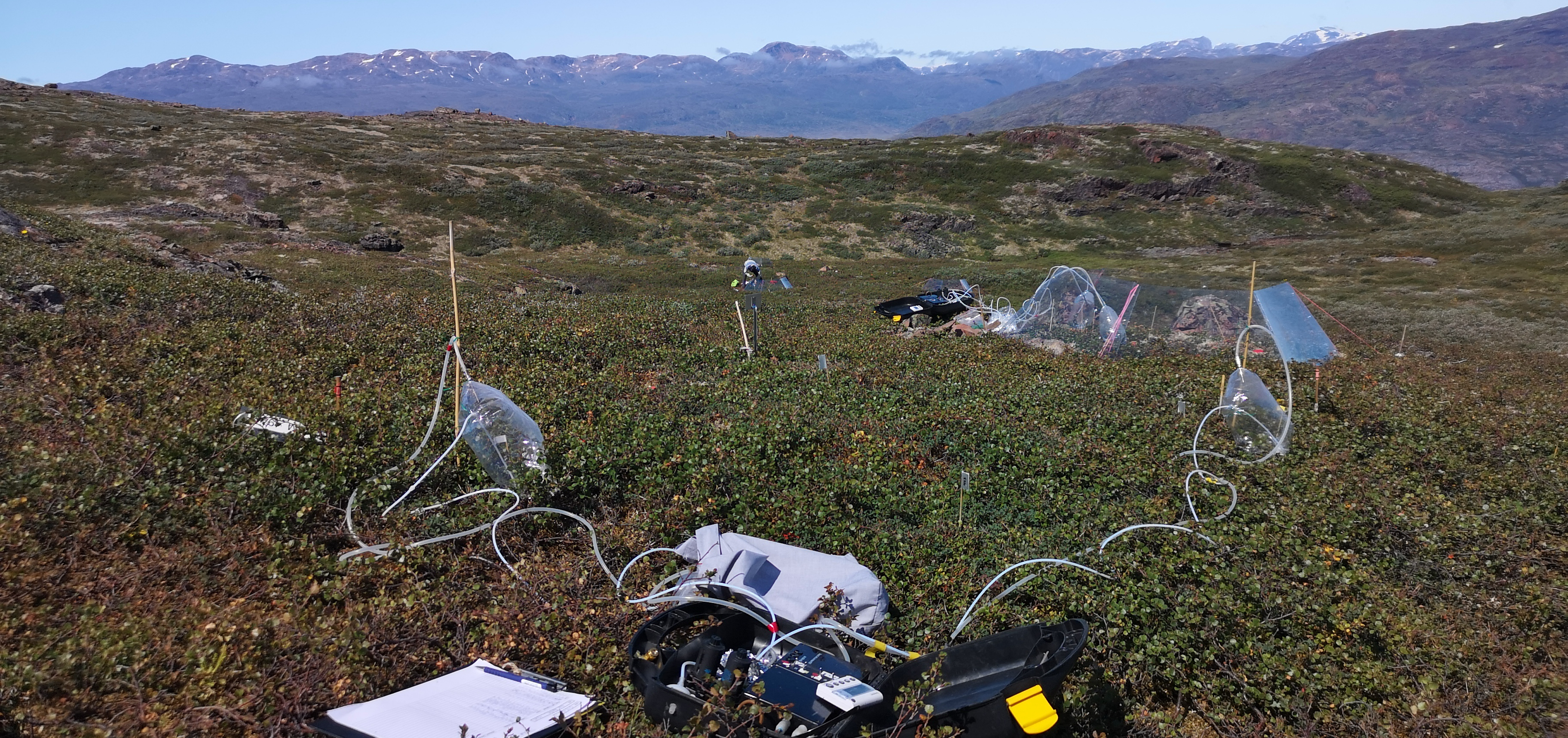Climate change and BVOCs
PhD thesis - Effects of insect herbivory and changing climate on biogenic volatile organic compound emissions in the Arctic
Insect herbivory is a significant source of plant stress and, due to climate change, the herbivory stress is continuously increasing. In response to herbivory, plants produce specialized metabolites to fulfil physiological and ecological functions. Some of the specialized metabolites are released into the air and thus, are called volatile organic compounds (VOCs). VOCs are highly reactive and play an important role in biosphere-atmosphere interactions.
In the Arctic, climate warming proceeds at twice the rate of the global average, and ecosystems are predicted to experience increased insect herbivore pressure and potentially higher VOC emissions. However, few studies have quantified plant VOC responses to insect herbivory under natural conditions in arctic ecosystems and even fewer studies have assessed how climatic changes that are predicted for arctic ecosystems, together with insect herbivory, affect VOC emissions in the Arctic.
The main aim of this PhD was to quantify how increased insect herbivore pressure affects VOC emissions in arctic ecosystems under future climatic conditions. To assess the effects of herbivory on VOC emissions, we exposed plants to local geometrid moth larvae and simulated herbivory treatment. We conducted these treatments in long-term field experiments manipulating climate warming and increased cloudiness (two future climatic changes predicted for arctic ecosystems). In addition, we used natural elevational gradients to represent a range of future climates. In this way, I could assess the combined influence of insect herbivory and climatic changes on VOC emissions. In all experiments, VOCs were collected using the branch enclosure method and analysed using gas chromatography-mass spectrometry.
The results showed that insect herbivory above background levels substantially increased VOC emissions from the three birch species studied – Betula pubescens var. pumila, Betula nana, and the Betula glanduosa-nana complex. Irrespective of the climatic conditions in future, insect herbivory will increase VOC emissions from birch in the Arctic. The results also showed that plant VOC responses to herbivory were highly variable and specific to species and study site. In some cases, plant VOC emission responses to herbivory were absent or the opposite of general expectations. The work presented here suggests that changes in plant traits upon experimental climate manipulations interact with insect herbivory and this challenges our understanding of how future climates will affect VOC emissions in arctic ecosystems
References:
Rieksta J, Li T, Junker RR, Jepsen JU, Ryde I, Rinnan R. Insect herbivory strongly modifies mountain birch volatile emissions. Frontiers in Plant Science. 2020 Oct 27;11:558979. https://doi.org/10.3389/fpls.2020.558979
Rieksta J, Li T, Michelsen A, Rinnan R. Synergistic effects of insect herbivory and changing climate on plant volatile emissions in the subarctic tundra. Global Change Biology. 2021 Oct;27(20):5030-42. https://doi.org/10.1111/gcb.15773
Rieksta J, Li T, Davie‐Martin CL, Simin T, Brogaard Aeppli LC, Høye TT, Rasmussen MA, Rinnan R. Seasonal and elevational variability in dwarf birch VOC emissions in Greenlandic tundra. Journal of Geophysical Research: Biogeosciences. 2023 Nov;128(11):e2023JG007475. https://doi.org/10.1029/2023JG007475
Rieksta J, Li T, Davie‐Martin CL, Aeppli LC, Høye TT, Rinnan R. Volatile responses of dwarf birch to mimicked insect herbivory and experimental warming at two elevations in Greenlandic tundra. Plant‐Environment Interactions. 2023 Feb;4(1):23-35. https://doi.org/10.1002/pei3.10100
Ryde I, Li T, Rieksta J, Dos Santos BM, Neilson EH, Gericke O, Jepsen JU, Bork LR, Holm HS, Rinnan R. Seasonal and elevational variability in the induction of specialized compounds from mountain birch (Betula pubescens var. pumila) by winter moth larvae (Operophtera brumata). Tree Physiology. 2021 Jun;41(6):1019-33. https://doi.org/10.1093/treephys/tpab023
This researh was funded by

